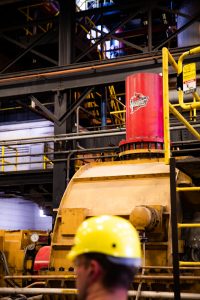In class, students learn about all of the electrical infrastructure surrounding communities. From single and three phase power systems, to generators, conductors, or transformers, they get a taste of it all. Every week, the class has a hands-on lab where they manually wire and design electrical systems. The main goal of this class is to show students exactly how much of their world is provided by electricity, Peschel says.